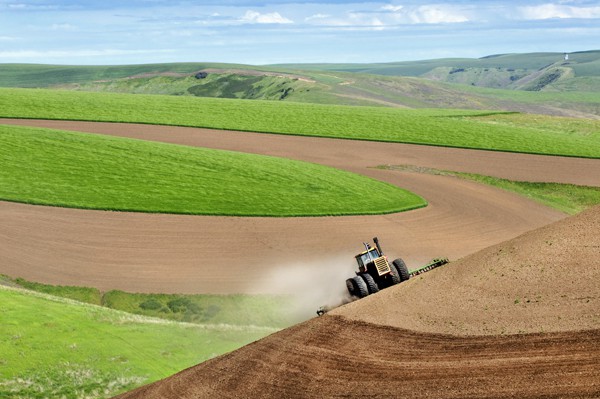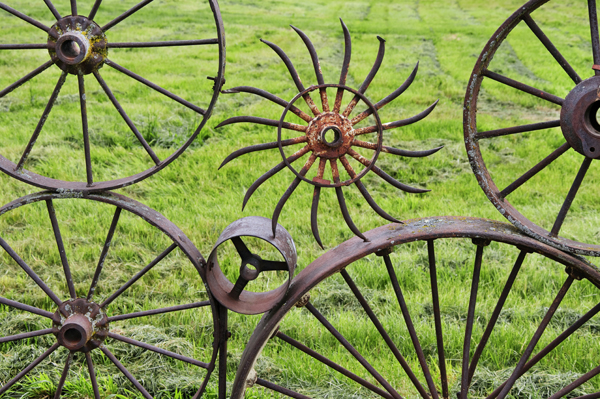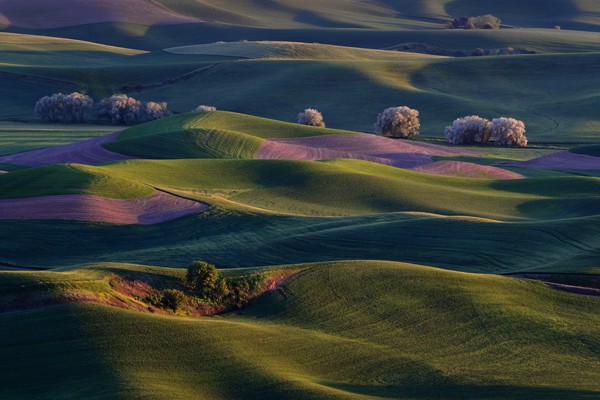Share
A Region Blurring Past & Present
Landscape, travel and nature photographer Randall Roberts may be best known for his work photographing areas of Colorado, the Rocky Mountain West...

Landscape, travel and nature photographer Randall Roberts may be best known for his work photographing areas of Colorado, the Rocky Mountain West, and New Mexico. Says Randall, “My goal is to capture moments in the outdoors that speak to the heart and renew our respect for wild places.” With a love for the outdoors and helping preserve links to our cultural past, Randall recently turned to Lattice, our new storytelling platform, to share his story on the Palouse region of Eastern Washington. Randall’s Lattice board, Palouse Country, shares his perspective of the region, which he describes as a blur between past and present.
We caught up with Randall to learn more about the area, and why it was an important place for him to photograph.
What story about the Palouse region and its people did you want to tell through your Lattice Board?
I wanted to tell the story of this rustic, picture perfect landscape of rolling hills and weathered structures frozen in time. Intriguing landscapes and pieces of the past are two of my favorite things to photograph and these are what drew me to the Palouse.
The geography of the Palouse Country is fairly unique. The region is comprised of rolling hills that break up the landscape into distinct pieces. There are no continuous valleys. As a result, there are many distinct pockets, scenes and towns to photograph that take some work to find.
The area is not a national park and that fact, when combined with the geography of the area, makes the Palouse a little challenging to explore. As a result, the Palouse Country may be largely unknown to many people.
In my photographs, I knew I had to capture the contours and colors of the Palouse landscape, and the challenges that landscape presents to those who live there. (See the photo above of the farmer tilling a steep slope).
I hope viewers of this board enjoy seeing the beauty of this unique and special place.
What’s the tone you wanted to convey? Why?
I wanted to convey the feeling of timeless beauty and simplicity that is so prevalent in the Palouse.
Past and present seems blurred here. Farmers use modern machines to practice centuries-old dry land farming techniques. Weathered barns and buildings are still in daily use. And abandoned, multi-story silos from the 1800’s still stand as reminders of an age gone by.
A visit to the Palouse can be like a walk through history, and I wanted to share that feeling.
Why is this region a special place to you?
During my visit, the fragility of the past was very evident. Some of the old barns I saw were on the verge of collapse, and a few had just fallen in recently.
I think that one of my duties as a photographer is to document things that may not be around tomorrow. I hope that by making compelling images, I can raise awareness and appreciation of the history and landscape that is disappearing around us.
What image in your board do you think represents the Palouse region best? Why?
I have to mention two images here that I think represent the most important themes of the Palouse. One is the “Sunrise on Palouse Hills” (below). This image was shot from Steptoe Butte, a 3162-ft butte that towers over the surrounding landscape. The top of this butte provides a 360-degree “aerial” view of the Palouse Country. From there, the compositions are endless. This image was made at dawn, as the first warm rays of the sun turned plowed areas of the hills pink. When I exhibit this image at art shows, visitors always ask me if that’s lavender growing there. They’re incredulous when I tell them that it’s simply plowed dirt turned pink by the low, warm sunrise light. I think this image captures the infinite color and form of the rolling hills of the Palouse.
My second favorite image I call “Abandoned Victorian House in Farm Field” (below). This is a profile shot of an old farmhouse, now abandoned and surrounded by crops. When I looked at this house, still sporting the fine architectural details put there by a loving hand, I thought of all the stories it could tell. What happened to the families that lived there? Where are the children of those farmers today? Why was it abandoned and left to be given back to the earth? I think this image speaks to the heart and heritage of the region.
Tell us about your own experience photographing this region. What did you enjoy about capturing the area? Any challenges?
The Palouse Country is a 4,000-square mile maze of hills, valleys and back roads covering much of Eastern Washington and parts of Western Idaho. It’s tough to know where to go to find pictures, and most of the area is private property. Surprisingly, this is a difficult place to photograph without a guide.
I spent six days in the Palouse Country, much of it in the company of my friend Jack Lien, who is a native of the area. Jack runs Palouse Country Photo Tours and leads photographers and visitors on tours of the area. He not only knows the best places to photograph, but is a friend and neighbor to the people who live there. He talks to farmers each spring to find out what they’ll plant and where. He learns where the yellow canola will be located and where other colors will appear in the landscape. He has permission from landowners to take people beyond the “No Trespassing” signs and into the most beautiful, hidden places in the Palouse.
Jack was able to get me into farmer’s fields, buildings and back roads not normally accessible to the public. I couldn’t have made most of these images without Jack’s knowledge of the area and neighborly diplomacy.
As a result, I was given an intimate view of the Palouse that many visitors don’t see, and for that I’m very grateful.
Anything else to share?
The area has a quiet beauty that pulls me in. I only saw the Palouse in spring and would love to go back there during harvest time, fall and winter. There are so many places to explore there and I know I’ve barely scratched the surface.







